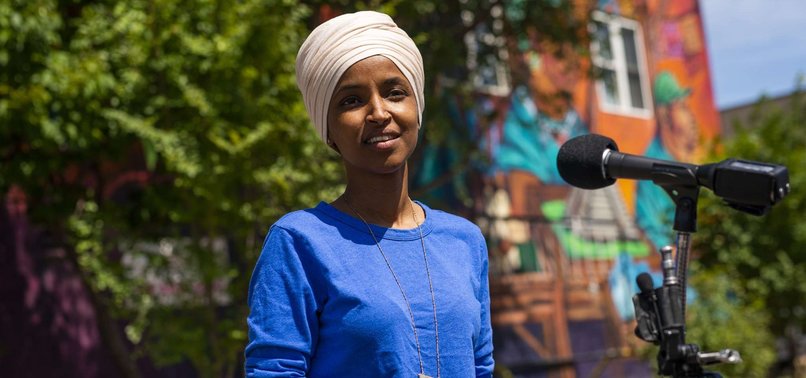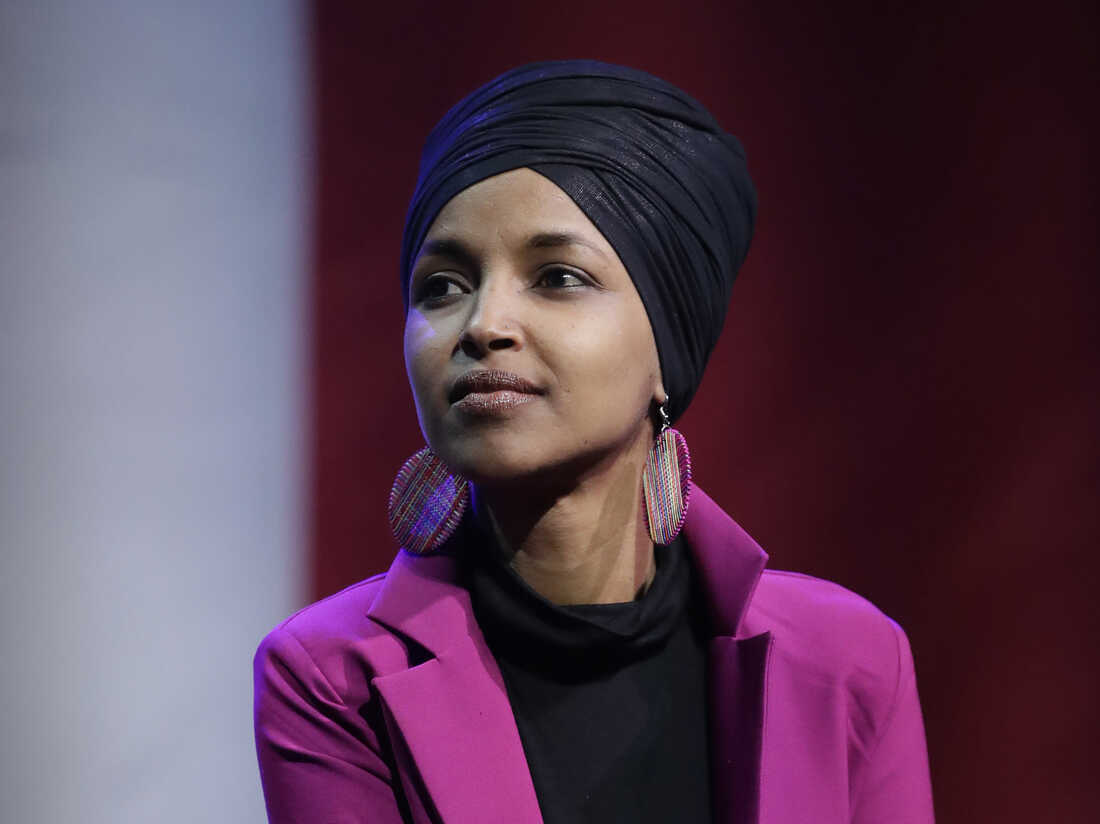Ilhan Omar’s Primary Victory

Ilhan Omar’s resounding primary victory in Minnesota’s 5th congressional district is a testament to her enduring popularity and her ability to connect with voters on a deeply personal level. This victory reaffirms her status as a leading voice for progressive values and a powerful advocate for marginalized communities.
Key Factors Contributing to Ilhan Omar’s Primary Win
Several key factors contributed to Ilhan Omar’s primary victory. These factors can be categorized as follows:
- Strong grassroots support: Omar’s campaign was fueled by a robust network of volunteers and supporters who actively engaged in door-to-door canvassing, phone banking, and social media outreach. This grassroots mobilization helped spread her message and build momentum, especially among younger voters and minority communities.
- Strong record of advocacy: Omar has consistently championed progressive causes, from healthcare and education to climate change and immigration reform. Her record of advocacy resonated with voters who value her commitment to fighting for social justice and economic equality.
- Effective messaging: Omar’s campaign effectively communicated her vision for a more just and equitable society. Her message focused on issues that directly impact the lives of everyday people, such as affordable healthcare, quality education, and access to economic opportunities.
- Political experience: Omar’s experience in the Minnesota House of Representatives provided her with a solid understanding of state-level politics and a track record of legislative achievements. This experience proved valuable in navigating the complexities of the campaign and building relationships with key stakeholders.
Campaign Strategies Employed by Omar and Her Opponents
Omar’s campaign focused on mobilizing her base of supporters and engaging with voters on a personal level. Her opponents, on the other hand, attempted to portray her as too radical and out of touch with the district’s values. They also sought to exploit her national profile, arguing that she was more interested in national politics than in representing the needs of her constituents.
- Omar’s campaign: Omar’s campaign employed a variety of strategies to reach voters, including:
- Extensive grassroots organizing: Omar’s campaign relied heavily on volunteers and supporters to knock on doors, make phone calls, and organize events. This grassroots mobilization was crucial in mobilizing her base and engaging with voters on a personal level.
- Targeted messaging: Omar’s campaign tailored its messaging to specific demographics and communities within the district. This targeted approach ensured that her message resonated with different groups of voters.
- Social media engagement: Omar’s campaign actively used social media platforms to connect with voters, share information about her platform, and mobilize supporters. This digital strategy helped her reach a wider audience and engage with voters on their own terms.
- Omar’s opponents: Omar’s opponents employed a variety of strategies to challenge her, including:
- Negative campaigning: Omar’s opponents often resorted to negative campaigning, attacking her character and her record. This strategy was intended to undermine her credibility and appeal to voters who were concerned about her political positions.
- Focusing on national issues: Omar’s opponents attempted to tie her to national controversies and national figures, arguing that she was more interested in national politics than in representing the needs of her constituents. This strategy was intended to alienate voters who were concerned about her national profile.
- Appealing to moderate voters: Omar’s opponents attempted to appeal to moderate voters by positioning themselves as more moderate and pragmatic. This strategy was intended to attract voters who were hesitant to support Omar’s progressive platform.
Comparison of Omar’s Platform with That of Her Challengers
Omar’s platform is rooted in progressive values and a commitment to social justice and economic equality. Her opponents, on the other hand, generally presented more moderate platforms, emphasizing issues such as economic growth and national security.
- Omar’s platform: Omar’s platform included a number of key priorities, such as:
- Medicare for All: Omar is a strong advocate for Medicare for All, a single-payer healthcare system that would provide universal coverage to all Americans.
- Green New Deal: Omar supports the Green New Deal, a comprehensive plan to address climate change and create millions of jobs in the clean energy sector.
- Free college tuition: Omar supports making college tuition free for all Americans.
- Immigration reform: Omar supports comprehensive immigration reform that would provide a path to citizenship for undocumented immigrants.
- Omar’s opponents’ platforms: Omar’s opponents generally presented more moderate platforms, emphasizing issues such as economic growth and national security. Their platforms often included proposals such as:
- Tax cuts: Some of Omar’s opponents supported tax cuts for businesses and individuals, arguing that this would stimulate economic growth.
- Increased military spending: Some of Omar’s opponents supported increasing military spending, arguing that this would strengthen national security.
- Free trade agreements: Some of Omar’s opponents supported free trade agreements, arguing that these would benefit the economy.
Impact of the Primary Results: Ilhan Omar Primary Result

Ilhan Omar’s resounding victory in the Minnesota Democratic primary sets the stage for a high-stakes general election and has significant implications for the political landscape of the 5th congressional district and the national stage. Her win signals a continuation of her strong political presence in the district, raising questions about the potential impact on the upcoming general election and the broader political landscape.
Implications for the General Election
Omar’s primary victory places her in a strong position for the general election. Her name recognition, strong base of support, and campaign resources provide a solid foundation for her campaign. However, the general election will likely be a closely contested race, with the Republican challenger seeking to capitalize on national political trends and mobilize their base. The outcome will hinge on factors such as voter turnout, the strength of the Republican candidate, and the national political climate.
Impact on the Political Landscape of Minnesota’s 5th Congressional District, Ilhan omar primary result
Omar’s victory reaffirms her dominance in the district, further solidifying her position as a leading voice for progressive values. This outcome is likely to influence the political landscape of the district, shaping the discourse and policy priorities for years to come. Her victory may embolden progressive activists and candidates in the district, potentially leading to a shift in the political balance of power.
National Significance of the Primary Results
Omar’s victory holds national significance as a testament to the continued strength of progressive politics. Her win, in a district that has become a national battleground for progressive ideals, is seen by many as a signal of the enduring power of progressive movements. Her victory has resonated with progressive voters across the country, further solidifying her national profile and influence.
Voter Sentiment and Turnout

The primary election for Ilhan Omar’s congressional seat saw a significant turnout, reflecting the high level of engagement and interest in the race. Voter demographics mirrored the district’s diverse population, with a significant representation of Somali-American voters, along with other minority groups and young voters.
Key Issues and Concerns
The primary election was marked by a range of issues and concerns that influenced voter decisions. These included:
- Economic Issues: The rising cost of living, healthcare, and education were major concerns for many voters.
- Social Issues: Issues such as immigration, gun control, and LGBTQ+ rights were also important considerations for voters.
- Political Polarization: The increasingly polarized political climate played a role in motivating voters to participate in the primary election.
Media Coverage and Public Opinion
Media coverage of the primary election was extensive, with national and local outlets providing in-depth analysis and commentary. The media’s role in shaping public opinion was evident in the way it framed the race and highlighted key issues. Public opinion polls conducted during the primary season provided insights into voter sentiment and the candidates’ strengths and weaknesses.
Ilhan omar primary result – Ilhan Omar’s primary victory in Minnesota’s 5th Congressional District underscores the importance of understanding the nuances of individual races within the larger context of election results. While national trends and broader political narratives can provide valuable insight, it’s crucial to examine local factors, candidate strategies, and voter demographics to fully grasp the significance of Omar’s win, particularly given the contentious nature of the primary race.
Ilhan Omar’s primary result is a testament to her continued popularity within her district, despite facing fierce opposition. Her victory, however, doesn’t necessarily signal a clear path to re-election. As the minnesota primary ilhan omar results show, her opponents are mobilizing, and the general election will likely be a closely watched contest.
The outcome will hinge on her ability to maintain her base while appealing to undecided voters in a district increasingly focused on national issues.